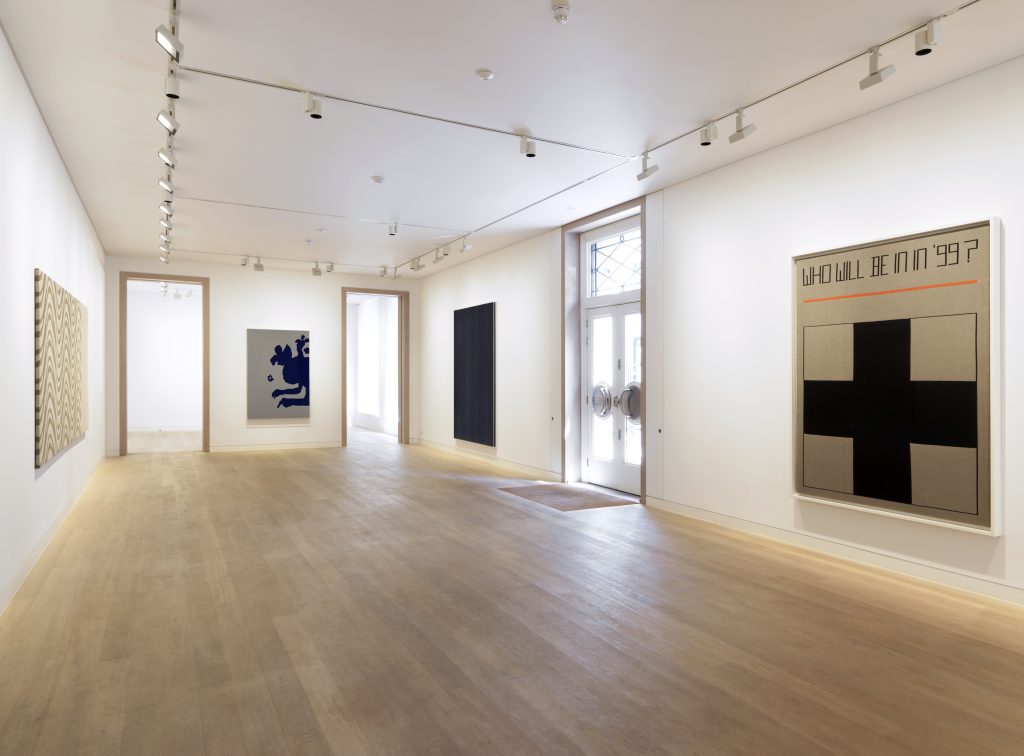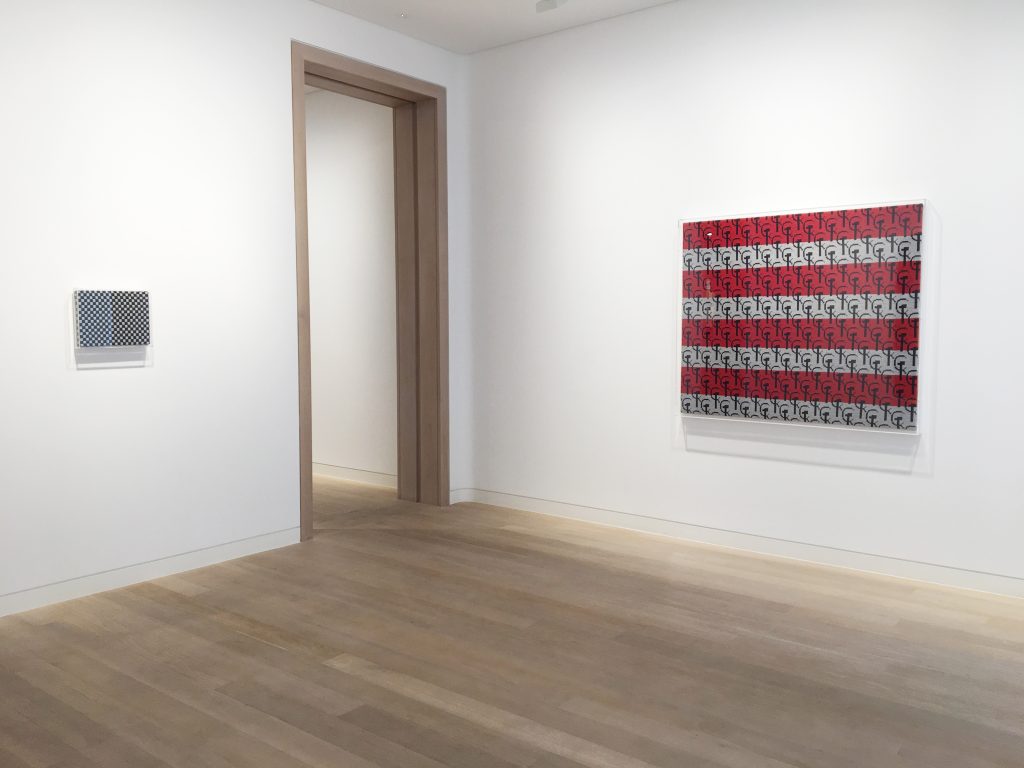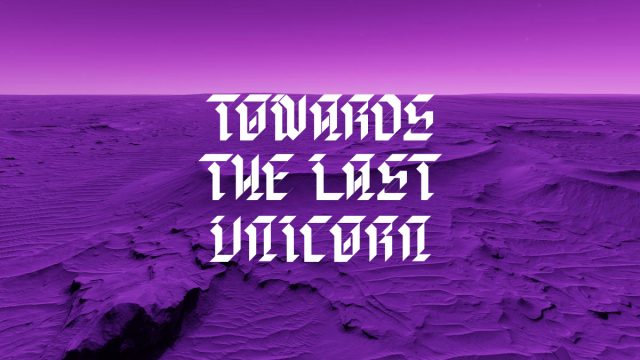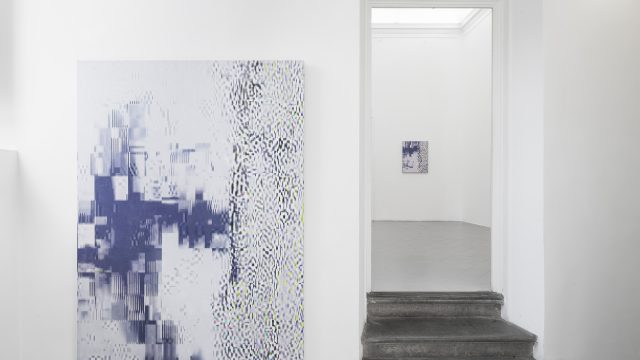Skarstedt is delighted to announce its forthcoming exhibition in London of knitted works by German artist Rosemarie Trockel. Featuring iconic knitted wool paintings from the 1980s and early 1990s, this is the first exhibition in the UK dedicated to this early body of work.
Begun in 1984, the Strickbilder ‘knitting pictures’ represent an important part of Trockel’s practice which includes drawings, sculptures and mixed-media installations. Using a computerised knitting machine, these early works are characterised by their formal contrast of patterns, such as vertical and horizontal stripes and checkerboard designs taken from existing pattern books and women’s magazines, as well as iconic political and commercial motifs including the hammer and sickle and playboy bunny.
In choosing wool and knitting, a material and technique traditionally associated with the female domestic realm and craft, Trockel explores the negative connotations of these ‘inferior materials and skills’.1 Distinguishing her practice from traditional craft, Trockel made blueprints for her designs and had them produced by a technician using computerised machinery. By mechanically producing the knitted patterns, she questions whether the cliché of women’s art relates solely to the choice of materials or whether it is also influenced by the treatment of these materials.
‘I wanted to know what causes a given kind of work to be regarded by women as embarrassing, both in the past and in the present: whether this has to do with the way the material is handled or whether it really lies in the material itself.’
Like a knitted garment in which the patterns are a key element of the object, similarly in Trockel’s wool paintings, the all-over repeated motifs form an integral part of their support. By contrast with Sigmar Polke, who challenged the conventions of ‘high art’ through his use of cheap printed fabric as a support for his painting in place of canvas, in her knitted works, Trockel redefines the picture by designing her own support and turning it into a picture in its own right.
Incorporating serial patterns and identifiable logos, the knitted paintings highlight the manipulation of visual culture through signs and logos. In Made in Western Germany , one of Trockel’s most recognisable knitted pictures, she makes reference not only to her German background but also to the commodification of art in a consumerist society. Repeating the phrase in a linear composition across the large-scale knitted plane, Trockel highlights this culturally loaded motif and its industrial production method, as well as engaging questions of originality, with notable reference to Warhol’s Pop art aesthetic. Indeed, each of the works included in the exhibition demonstrate Trockel’s keen acknowledgment of art history, with further references to Minimal Art, the movement to first introduce industrial production techniques into art.
In works such as Untitled , 1992, from a series based on Hermann Rorschach’s ‘ink blot’ constellations, Trockel presents her own interpretation of this subject explored most notably by Warhol for its blurring of abstraction and representation. Through her digitalisation of this free-form method of image production, Trockel challenges the chance patterning of the Rorschach tests and replaces the automatic qualities of this technique favoured by the Surrealists with a codified structure.
Muscular in their scale as well as their production, the works in the exhibition highlight the tension between Trockel’s use of feminine materials and the masculine techniques used to create them. In Who Will Be In In ’99? , 1988 featuring a computer-rendered black geometric structure reminiscent of an Ad Reinhardt Ultimate Painting, Trockel pokes subtle jest at the repeated citation of the 1960s male artists as provoking a radical reconsideration of the nature of painting. Subverting the embedded hierarchies and outdated gender politics through her combination of materials and methods, Trockel paves way for a revised way of looking and attributing value to artistic production.
Skarstedt (press release)



knitted wool, 70 7/8 x 47 1/4 in. (180 x 120 cm.)
71 7/8 x 48 1/4 x 2 7/8 in. (182.6 x 122.6 x 7.3 cm.) perspex case
This work is from an edition of three, plus one artist’s proof. © DACS 2017


signed, titled and dated ‘1988’ (on fabric affixed to the stretcher)
knitted wool stretched over canvas, 82 3/4 x 63 in. (210.2 x 160 cm.)
This work is number two from an edition of three, plus one artist’s proof. © DACS 2017




